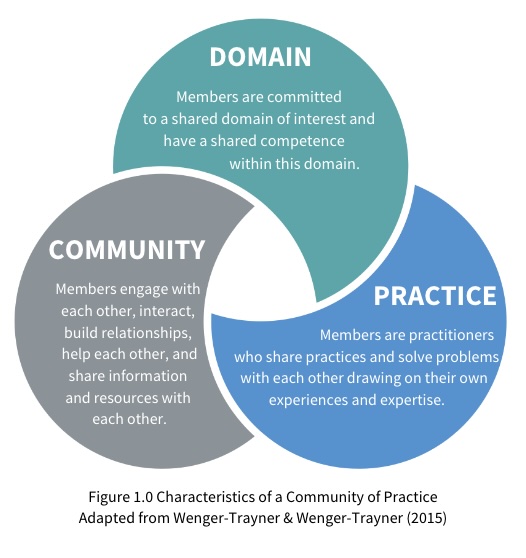Communities of Practice for System Education Leaders
Resources to Support the 2025/26 Communities of Practice
- CASS Communities of Practice Guide to Support System Education Leaders (Fillable)
- CASS Communities of Practice Guide to Support System Education Leaders (Printable)
- Community of Practice Planning Tool
- 2025-26 CASS CoP Sample Year Plan
- 2025 Fall Learning Conference CoP Slides
- 2025 Fall CASS Pro-spective Project
Introduction
The introduction of the Continuing Education Program (CEP) in September 2024 provided an opportunity to review and reflect upon professional learning offerings for CASS members and ensure that these offerings are aligned with the foundational CEP Guiding Principles – research-informed, innovative, and responsive. The guiding principles ensure that learners’ experiences in the program are in alignment with achieving a consistent standard of professional practice, as identified in the Leadership Quality Standard (2023) and Superintendent Leadership Quality Standard (2023).
During 2024-2025, CASS Communities of Practice (CoPs) were introduced and reflected a move toward structured, research-based learning model that prioritizes inquiry, collaboration, and the collective building of knowledge and professional capacity. CoPs bring members together around a particular area of concern, problem of practice, or area of interest. They emphasize collective and collaborative learning focused on a purpose statement that resonates with the group. By refining the CoP implementation and gathering continuous feedback along the way, the CoP framework aims to enhance professional learning while maintaining practical support for regulated members.
Purpose
- To support system education leaders in demonstrating professional competence and engaging in ongoing reflection about their own professional practice through participation in a professional Community of Practice.
- To support system education leaders with leveraging the Community of Practice model within their school authorities for a variety of purposes, including engaging staff in professional growth and reflection, advancing initiatives, implementing change, gathering feedback, and generating new knowledge.
Background
The concept of a community of practice comes from learning theory where the term was coined to describe the dynamic and living learning communities that exist in organizations and communities (Wenger-Trayner & Wenger-Trayner, 2015). Lave and Wenger (1991) are credited with first using the phrase “community of practice” which they defined as a group of people who share a concern, a set of problems, or a passion about a topic, and who deepen their knowledge and expertise in this area by interacting on an ongoing basis.
The concept is now being applied across organizations and sectors as a strategy to create new knowledge, solve problems, advance professional learning and growth, and achieve organizational goals. Communities of practice allow for groups of people who share a common interest or have common goals to come together “to learn, share information, and reach their individual and group objectives” (Research Impact Canada, n.d.). These communities of practice can “foster a sense of camaraderie and mutual understanding, making problem-solving and innovation much more seamless and effective.”(Goncalves, 2024). In essence, communities of practice serve as powerful models for continuous professional learning and collective growth, enabling individuals and organizations to transform shared interests into meaningful collaboration and sustained improvement.
Cambridge et al. (2005) stated that communities of practice are important because they:
- Connect people who might not otherwise connect.
- Provide a shared context for people to share ideas and experiences to build understanding.
- Enable dialogue so that people can explore new possibilities, solve problems, and create new learning.
- Stimulate learning by creating opportunities for mentoring, coaching and reflection.
- Capture and diffuse existing knowledge so that people can enhance and improve their practice.
- Introduce collaborative processes to encourage the flow of ideas and information.
- Help people organize and purposefully plan actions to achieve desired results.
- Generate new knowledge to help people adapt to changes and new ideas.
In summary, communities of practice extend far beyond simple networks, role-alike session, or discussion groups. They are intentional, dynamic structures that cultivate shared professional learning, innovation, and professional growth. By connecting system education leaders through common purpose and sustained collaboration, they can strengthen both individual professional capacity and school authority effectiveness.
Characteristics of Communities of Practice
Communities of practice are unique and different from regular teams or collaborative structures that might exist within an organization. Social learning and “thinking together” are key characteristics of a community of practice (Goodhue & Seriamlu, 2021, p. 3). Members of a community of practice come together to learn from and with each other. They are united by a common area of interest or role, they may share problems of practice, and they may have common or complementary expertise and experience. According to Wenger-Trayner and Wenger-Trayner (2015) there are three characteristics of a community of practice that are crucial to its success. See Figure 1.0.

References
Cambridge, D., Kaplan, S., & Suter, V. (2005). Community of practice design guide: A step-by-step guide for designing and cultivating communities of practice in higher education. Educause Learning Initiative. https://library.educause.edu/-/media/files/library/2005/1/nli0531-pdf.pdf
Gonçalves, L. (2024, January 13). Communities of practice: The ultimate guide. ADAPT Methodology. https://adaptmethodology.com/blog/communities-of-practice/
Goodhue, R., & Seriamlu, S. (2021). A quick guide to establishing a community of practice. ARACY.
Lave, J., & Wenger, E. (1991). Situated learning: Legitimate peripheral participation. Cambridge University Press.
Research Impact Canada. (n.d.). Community of practice: Everything you need to know. https://researchimpact.ca/resources/community-of-practice-everything-you-need-to-know/
Wenger-Trayner, E. & Wenger-Trayner, B. (2015) An introduction to communities of practice: A brief overview of the concept and its uses. https://www.wenger-trayner.com/introduction-tocommunities-of-practice.
